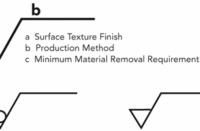I wish marketing a decorative concrete business were like elementary math. Alas, it’s much more challenging — like hypercomplex algebra where you’re constantly trying to solve for X without most of the necessary decision-making info. You can get tripped up on a lot of stumbling blocks.
Let’s take a look at three critical challenges to marketing your business effectively and how you can resolve them.
Sourcing growth capital
Despite the sluggish economy, most contractors offering concrete stain, stamped concrete and other finishes are focused on growth. But if you are like most small-business owners, you probably lack sufficient resources to expand your customer base. In fact, you’re probably caught in a cycle of using the revenues from your next job to cover the expenses from your last job — leaving no cash flow to fund an essential marketing program. Raising funds can help you overcome this battle.
But therein lies the challenge. Banks are not willing to loan like they used to. Risk-capital investors (e.g., angels or venture capital firms) expect high returns and a quick exit. And even a direct public offering requires about $25,000 to prepare a prospectus and file with your state. Do you have $25,000 lying around? Probably not. And chances are your friends and family don’t either.
Instead, consider using a private placement to raise needed funds. It’s a process of selling equity shares to a select group of (accredited) investors who earn at least $200,000 or who are worth $1 million. You’re responsible for finding these investors, but you can enlist the help of a broker. This process sounds complicated but it’s a lot more common that you might think. More than $80 billion was funded in 2012 using private placements.
While private investment capital is not right for all small businesses, a number of benefits to this approach make it worth considering. For example, private placements are less expensive than public offerings and they typically happen faster. Also, private investors tend to be more patient than venture capitalists or bankers.
What’s required? Your decorative concrete business should be established and generating relatively predictable cash flow to demonstrate viability to private investors. You’ll need a professional business plan, a private placement memorandum that discloses the investment risks, and a lawyer experienced in private placements.
An option for raising smaller sums of money is donation-based crowdfunding websites such as Kickstarter. Creating an account is free. You post a video about your decorative concrete business concept and offer token rewards (e.g., T-shirts or coupons) to encourage people to invest in your business.
Kickstarter would be a good solution for decorative concrete contractors because its relatively younger and geekier audience tends to be rather creative. Since its launch, more than $814 million has been pledged by nearly 5 million people. Using this strategy would not require an attorney or complicated legal documents — just a decent video and a compelling argument about why someone should donate money to your campaign.
Your pitch might sound like this: “I’m a starving contractor looking for $4,500 to pay for needed project materials. Here is the architects’ project illustration. See? Helping me complete this project will allow us to make a big impact to the décor of this city.” Crowdfunding is more successful when you clearly communicate how much you need, why you need it and what impact it will make on your business and the community.
Generating referrals
Referrals are very important. Inherently, they communicate and establish your business’ credibility. They reinforce your value proposition (to prospective customers) and legitimize your marketing efforts. By their very nature, referrals justify your brand position within the marketplace. More referrals mean more business.
Despite their significance, referrals do not come cheap. Decorative concrete contractors often forget to look at referrals from a customer’s point of view: “I know referrals are important to you, but what’s in it for me?”
Customers might feel they have a lot to lose in referring your business. Even if you’ve never given them a reason to doubt your ability, there is still a risk you might screw up. Customers know that. And they’re aware their own credibility is on the line with their friends.
The most important thing you can do to get referrals is to be worthy of them. This goes beyond providing a quality product. It includes integrity, customer service and appropriate service offerings. Inspiring confidence is the minimum requirement for getting referrals.
Create a referral exchange program with complimentary service providers. Once you’ve identified your strategic focus (“I am the go-to guy for restoring concrete driveways!”) refer all other opportunities to partner service providers in exchange for a referral fee.
Include a “referrals appreciated” starburst on your email signature, website, sales collateral, ads and newsletters. (You ARE sending newsletters, right?) Offer a guarantee or affiliate program. Update your social networking profiles. If otherwise happy customers don’t want to refer you, create alternative ways for them to contribute, such as project profile write-ups and testimonials.
Developing a marketing plan
A marketing plan — specifically, the market research that goes into developing the plan — is your map or North Star for navigating the competitive landscape. It’s a decorative concrete contractor’s guide to marketing success. Private investors will ask to see it. The problem is that developing an effective plan takes time and effort. You must prioritize.
I’ve found that most decorative concrete contractors are not even aware of the key elements that should be included in a marketing plan. Let’s examine them here.
Identify your target market. Provide market research that justifies the niche focus you’re going to attack. Explain why your customer needs your service. What are the “pain points” that your service will address? How would you profile this customer base?
Describe your product — in your case, your decorative concrete service. What makes it unique? Why is it a good fit for your target customer? What makes it valuable?
Spend some time examining your competition. Distinguish between your direct and indirect customers. How is your competition positioned within the market?
Write down the marketing strategies you intend to use to communicate your brand value to customers. This may include networking, websites, press releases, training programs, direct marketing, trade shows, personal selling, articles and advice columns, or advertising.
Use pricing to expand your product section. Price can be used to position your service in the minds of customers as a value or premium product.
The budget section should demonstrate how you intend to cover the cost of your marketing plan.
No plan is worth anything without specific goals. Set realistic, quantifiable goals — for example, we will have 20 new customers by the end of next quarter, our business will receive 30 new leads from our ad campaign, etc. Goals may include sales, customer satisfaction levels or the number of new customers.
















